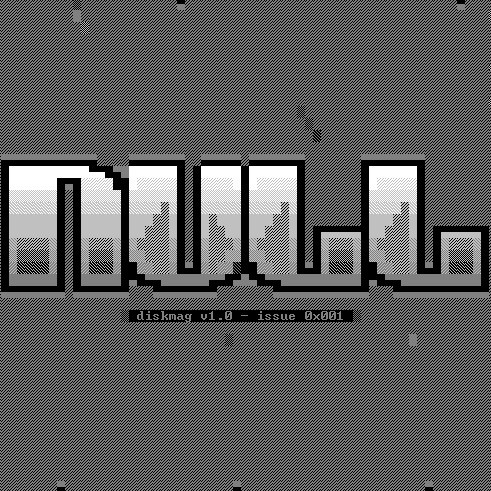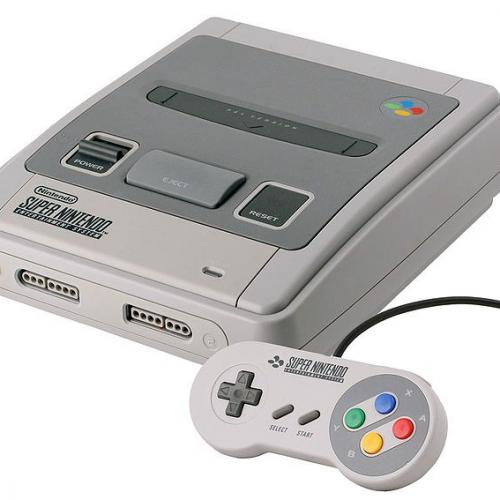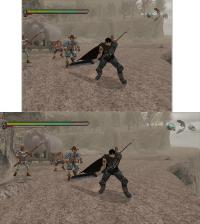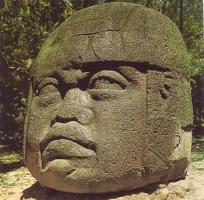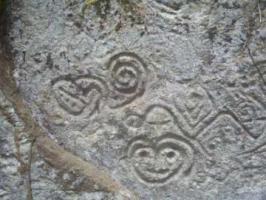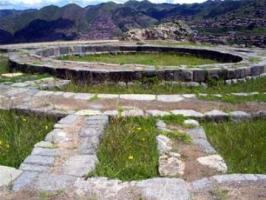Copy Link
Add to Bookmark
Report
The Hex Files part 3

Ferris The Hex Files
Programmer at work - part 3 by Ferris
Welcome again, and before we start I'll just give you the
solution to the little teaser I posed at the end of the
previous article. The modified routine should look like this:
*= $0900
LDX #$00
LDA #$03 To change the character
LOOP STA $0400,X
INX
CPX #$0B To change the number of repeats
BNE LOOP
RTS
Okay, lets have some fun with a loop shall we? One of the
most common things in demos (and in fact most games too) is
the scrolling message and what we are going to do is a simple
one with some limits. As we have seen from the example last
issue it's possible to put characters on the screen very
fast, so fast in fact that we can't actually see it happen.
It's also possible to move the characters around the screen
using loops. Load up the Turbo Assembler you should have
ended up with after the second part of this course and start
it with SYS36864, tap return once to get the cursor to its
start position and enter this program:
*= $0900
MAIN LDX #$00
MOVELOOP LDA $0401,X
STA $0400,X
INX
CPX #$27
BNE MOVELOOP
INC $0427
JMP MAIN
Before we run it lets look at what you have typed. The *
command is as we used before, telling Turbo we want our code
at $0900 (or 2,304 in decimal). We then have a label called
"main" which is the start of our main code (hence the name!)
and that clears the X register again as we have done before.
The main loop of the program (named with the appropriate
label again) is new though.
It reads from screen position $0401 and then puts whatever it
has read into $0400. Then the X register goes up one and it
repeats that until X reaches $27 (which is 39 in decimal).
Why stop at 39? Well, when X is 39 the routine is reading
from $0427 (the top right hand character of the screen) and
writing to $0426 (one character to the left) so if we
actually waited until X became 40 (since the screen is 40
characters wide this would seem logical) we would have moved
on to the next line of the screen! The reason for this is
that we are counting from zero not one. Finally we just play
with the character at the top right of the screen to make
something to look at (by constantly INCrementing it to make
it show every character the C64 has).
Okay, lets crank it up and watch it go! Assembling is as
before, press the back arrow key at the top left of the
keyboard and the cursor disappears. Now press the 3 key to
assemble and when that's done press the S key. Oh. Now
something is happening but because machine code is so fast we
can't see what! We need to slow things down a bit and to do
that I'll introduce a new friend in the form of one of the
locations in the VIC chip.
Location $D012 (53,266 in decimal) is known as the raster
register. The raster is a line that moves down the C64's
screen redrawing it fifty times a second and there are over
three hundred "raster lines" on a standard PAL C64 (like the
one most of us are using) and it's possible to wait for a
specific line and do something when you get there. Lets alter
our example to take advantage of this.
Hit runstop and restore to stop it running and SYS36864 to
get back into Turbo. Now move the cursor so that it's to the
right of the second line (the one that reads LDX #$00) and
then tap return once to insert a blank line. Add the
following:
LDA #$FE
RASTER CMP $D012
BNE RASTER
And re-assemble it as before. The three new lines set the A
register up with a value of $FE (254 in decimal) and then
compare that to whatever $D012 contains (in the same way as
we compared numbers in the previous instalment). If it's not
the same (in other words if the raster isn't at position $FE)
then the Branch if Not Equal (BNE) back to RASTER keeps it
waiting until it is. You should now see loads of characters
scrolling across the top of the screen very fast but not so
fast that you can't see what's going on. Don't worry about
the odd jump, we are only experimenting at this point.
Believe it or not this is moving fifty times a second!
We have time to add one more feature this issue I think so
lets jump back into Turbo again. Using the same inserting
trick I just showed you alter the routine to read like this:
*= $0900
LDY #$00 (this line is new)
MAIN LDX #$00
LDA #$FE
RASTER CMP $D012
BNE RASTER
MOVELOOP LDA $0401,X
STA $0400,X
INX
CPX #$27
BNE MOVELOOP
LDA $A1FF,Y this line is new too
STA $0427 this line used to be INC $0427
INY this line is new as well
JMP MAIN And crank this up.
This time you will see words flying across your screen! What
we are actually doing in these new bits is using the Y
register as a counter and reading from the C64's memory at
$A1FF onwards. So where do the words come from? Well, $A1FF
is actually where the C64 keeps some of its error messages
and this is what you are seeing!
Well, I think that's almost enough for another instalment but
before I go another couple of little challenges for you all.
At the moment the routine reads from $A1FF but can you change
it to read from $E460? And can you make it work on the next
line of the screen (remember to change all of the references
to the screen). I'll give the answers next issue, but If you
have any questions about this article or machine code, drop
me an email and I'll see what I can do!
The next installment of The Hex Files will be added
soon.</BODY








